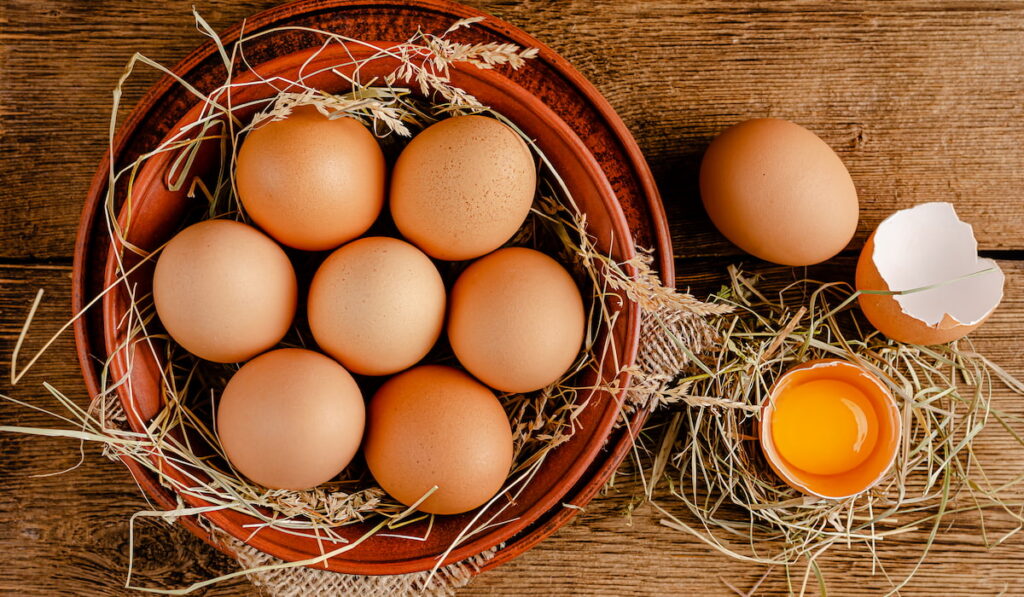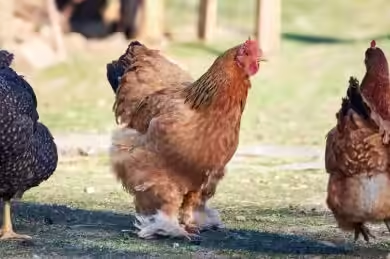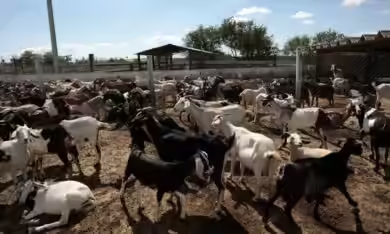For anyone managing a flock, whether a budding backyard operation or a larger commercial endeavor, the quest for optimal egg yield is a constant focus. A pervasive question I frequently encounter, and one that often leads to misconceptions, is straightforward yet complex: How many eggs will 100 chickens lay a day? While the allure of a basket brimming with 100 perfect eggs from 100 hens is certainly appealing, the reality of daily hen egg production involves a nuanced understanding of poultry biology and management.
As a seasoned poultry expert, I’m here to provide a pragmatic answer, exploring the factors that genuinely influence your flock’s output and sharing actionable strategies for maximizing egg production. If you’re considering expanding your operations, understanding the nuances of layer chicken farming is a crucial first step.
Myth vs. Reality: The 100-Egg Dream
Let’s bust a common myth right off the bat: the idea that 100 chickens will magically lay 100 eggs every single day. I’ve heard this a million times! While it’s a lovely thought, the reality is a bit different. Expecting a one-to-one ratio of hens to eggs daily is simply unrealistic, and understanding why can actually help you become a much better flock manager. We’re going to dive into the true numbers and show you what’s genuinely achievable and how to get there.
How Many Eggs Will 100 Chickens Lay A Day?
Many folks picture 100 chickens happily laying 100 eggs every single day. That’s a lovely thought, isn’t it? However, the reality of chicken egg production per day is far more nuanced. It’s an exciting journey, for sure, but also one that requires a clear understanding of what’s genuinely achievable.
What is the Average Daily Egg Production for 100 Chickens?
When we talk about “good egg production” from a flock of 100, we’re typically looking at somewhere between 60 to 80 eggs daily. This translates to an egg laying percentage of 60% to 80%, which is fantastic! Understanding “good” production rates helps set realistic goals. For example, if your hens are consistently laying around 70 eggs a day, you’re hitting a solid mark. Want to compare this to a larger scale? You might be interested in knowing how many eggs 200 layers can lay in a day or even how many eggs 500 layers can lay in a day.
Why isn’t it 100%? Well, it’s pretty simple biology. A hen’s egg production cycle takes roughly 24 to 26 hours. That means not every single hen will lay an egg every single day. Some might skip a day, or even two, before getting back into their rhythm. It’s just how they roll! Furthermore, various factors can influence this. Poultry science experts (e.g., university extension services) often use metrics like Hen-Day Egg Production (HDEP), which calculates the number of eggs laid divided by the number of hens present each day, giving a clearer picture of efficiency. Another is Hen-Housed Egg Production (HHEP), which tracks total eggs laid from the initial number of hens housed, useful for long-term flock assessment.
What is a Realistic Expectation for Egg Production from My Flock?
The typical range for healthy, well-managed hens tends to hover around that 60-80% mark, sometimes even higher for certain breeds during their peak. But don’t be surprised by daily variability! One day, your 100 chickens might bless you with 85 eggs. The next, you might only find 65. This simply means you shouldn’t panic if your daily collection varies; focus instead on your weekly or monthly averages to get a truer picture of your flock’s health and productivity. In my experience, we often see these fluctuations even in the most meticulously cared-for groups. Over time, those numbers usually even out, painting a consistent picture of your flock’s overall output.
What Factors Affect How Many Eggs Will 100 Chickens Lay A Day?
So, you’ve got your 100 hens, and you’re aiming for that sweet spot of high hen egg production. But what actually gets those little egg factories running? It’s not just about tossing out some feed and hoping for the best. Several crucial factors affecting egg laying truly dictate your flock’s success. Neglecting even one can significantly impact your daily egg yield.
How Does Chicken Breed Affect Egg Laying?
Choosing your chicken breed is like picking the right tool for the job. Some breeds are just born to lay, lay, lay! If maximizing your daily egg yield is your main goal, you’ll want to lean towards high-producing breeds. Let me break down what you can realistically expect from 100 hens of some popular breeds:
| Breed Name | Daily Eggs (per 100 hens) | Egg Color | Key Characteristics |
| Leghorns | 68-82 eggs | White | Lightweight, highly efficient layers, can be flighty |
| ISA Browns | 90-96 eggs (at peak) | Brown | Commercial hybrids, exceptionally high productivity |
| Rhode Island Reds | 71-86 eggs | Brown | Hardy, dependable, dual-purpose |
| Golden Comets | 71-86 eggs | Brown | Docile, friendly, excellent layers |
| Plymouth Rocks | 70-80 eggs | Brown | Calm, dual-purpose, lay well in cooler weather |
| Australorps | 68-82 eggs | Dark Brown | Robust, world record holders for laying (364 eggs/year) |
| Sussex | 65-75 eggs | Cream/Light Brown | Dual-purpose, adaptable to various climates |
| Orpingtons | 55-70 eggs | Light Brown | Friendly, beautiful, prone to broodiness |
| Wyandottes | 40-55 eggs | Brown | Cold-hardy, good temperament, less prolific layers |
Understanding these breed characteristics is key to your flock’s success and your personal egg basket goals.
How Does Age Impact Egg Production and Laying Lifespan?
Just like us, chickens have their prime years! The age and egg laying go hand-in-hand. Most hens hit their peak production period starting around 18 weeks old and continuing strongly through their first one to two years of life. During this time, their egg production cycle is at its most efficient. You’ll likely see your highest daily egg yield from your younger hens. For a general guide on when chickens start laying eggs, we have a helpful resource. Also, if you’re curious about specific breeds like Easter Eggers, we’ve got that covered too.
But here’s the thing: egg-laying gradually declines with age. After their second year, you’ll probably notice a slow decrease in their egg laying rate. They won’t stop laying entirely, but the frequency will drop. It’s a natural part of their life cycle. To maintain consistent production, especially in a large flock, I often recommend a strategy of introducing new pullets (young hens) into your flock periodically, perhaps replacing 20-30% of your oldest hens each year. This ensures you always have a fresh batch of young, high-producing layers to keep your overall chicken egg production per day robust. It’s a bit like cycling through your team to keep the star players on the field!
What Role Does Nutrition Play in Optimal Egg Output?
Think of your hens as tiny athletes; they need proper fuel to perform. The right chicken nutrition for eggs is absolutely paramount. A balanced layer feed isn’t just a suggestion; it’s a necessity. Look for bags labeled “Layer Feed” at your local feed store or agricultural supplier. This specialized feed contains the optimal levels of protein, calcium, vitamins, and minerals they need to form those beautiful, strong-shelled eggs. Without enough protein, for example, their bodies simply can’t produce eggs efficiently. For a deeper dive into the right chicken feed for egg production, check out our guide.
Calcium is super crucial for strong shells. In fact, if you’re finding thin or soft-shelled eggs, calcium deficiency is often the culprit. I always recommend supplementing with oyster shells, which chickens will free-choice as needed. They’re a fantastic natural calcium source. Be warned: the dangers of imbalanced diets or excessive treats can quickly lead to diluted essential nutrient intake, resulting in fewer eggs, weak shells, or even feather picking in the flock.
Believe it or not, too many scratch grains or kitchen scraps, while seemingly kind, can throw things off. And let’s not forget water! It’s the often-overlooked essential for egg production. Just like us, chickens need constant access to fresh, clean water. Dehydration can quickly bring their laying to a screeching halt. If you’re planning your feed budget, knowing how many bags of feed for 100 layers per month is also very helpful.
How Does Light (Daylight Hours) Affect Egg Laying?
Have you ever noticed your hens slow down laying in winter? It’s not just the cold; it’s often the light! Why light stimulates egg production is fascinating science. Hens need about 14 to 16 hours of light per day to keep their endocrine system humming and trigger that consistent egg production cycle. When daylight hours shorten, especially in winter, their bodies naturally slow down or stop laying altogether, often leading into a molting period.
This seasonal impact, including the winter slowdown and molting, can drastically reduce your daily egg yield. Therefore, if you’re keen on maximizing egg production year-round, implementing supplemental lighting for egg layers is a game-changer. For instance, a single 60-watt equivalent LED bulb for a standard 10×10 ft coop can often provide sufficient illumination. (If year-round production isn’t your priority, allowing them to naturally slow down in winter is also perfectly healthy for the hens).
Simple timers and appropriate bulb types (LEDs are efficient!) in the coop can extend their “daylight” hours. I’ve seen firsthand how a little extra light can keep those egg baskets fuller, even when the days outside are short and dreary. It’s a simple, cost-effective way to ensure continuous hen egg production.
What Environmental Factors Can Decrease Egg Production?
A happy hen is a laying hen, plain and simple! The environment and stress levels within your flock play a massive role in their overall hen egg production. Temperature extremes, both sweltering heat and biting cold, can put a real damper on their laying. Chickens are surprisingly resilient, but extreme conditions require extra care. Proper ventilation in summer and insulation in winter can make a world of difference.
On top of that, consider the impact of predators, loud noise, and overcrowding. Anything that makes your chickens feel unsafe or uncomfortable can cause significant stress, leading to a drop in their egg laying rate. A stressed chicken is a less productive chicken, period. That’s why providing a safe, clean, and comfortable coop is non-negotiable. Enough roosting space, clean nesting boxes, and room to roam help reduce stress.
Overcrowding (generally less than 3-4 square feet per bird inside the coop) is a huge stressor that can lead to problems. A well-designed coop truly boosts their egg production cycle, ensuring your 100 chickens stay relaxed and productive. For those thinking big, understanding how much space you need for 1000 layers is a vital consideration.
How Can I Optimize Egg Production from My 100 Chickens?
Alright, so you’ve got your 100-chicken flock, and you’re ready to get serious about maximizing egg production. Forget those unrealistic expectations of 100 eggs from 100 hens every single day. Instead, let’s focus on practical, expert-backed strategies that genuinely boost your daily egg yield and keep your hens happy and healthy. As someone who’s managed flocks of all sizes, I can tell you these tips are tried and true. To truly unlock the potential of your flock, understanding these principles is key. In fact, we’ve compiled 15 simple secrets to raising happy, healthy chickens that actually lay eggs that you might find incredibly useful.
How Can Smart Breed Selection Boost Your Daily Egg Yield?
We touched on this earlier, but it’s so critical it bears repeating. Your journey to stellar chicken egg production per day really begins with breed selection. If your goal is primarily eggs, especially for a commercial venture or a very hungry family, prioritize breeds known for their consistent egg laying rate. As I’ve said, the Leghorns, Rhode Island Reds, Golden Comets, and ISA Browns are powerhouse layers. They are specifically bred to deliver a high hen-day egg production (HDEP). Choosing heritage breeds for their unique egg colors is charming, but understand they might not give you the sheer volume you’re hoping for.
How Can Top-Tier Feeding Programs Unlock Your Flock’s Peak Egg Production?
Nutrition is the backbone of your flock’s productivity. You simply cannot achieve peak egg production per day without a high-quality feeding program. I can’t stress this enough: your hens need a complete layer feed that’s formulated specifically for egg production. This isn’t just chicken feed; it’s a carefully balanced diet. Ensure it has at least 16-18% protein and adequate calcium (around 3.5-4.5%). And don’t forget those free-choice oyster shells! They’re like nature’s calcium supplement. Avoid diluting their diet with too many scraps or scratch grains, which can throw off their nutrient balance and lead to a noticeable drop in their egg laying percentage.
How Can Mastering Light Exposure Ensure Year-Round Egg Laying?
For year-round hen egg production, especially when dealing with the shorter days of winter, mastering light exposure is a game-changer. Our hens need 14-16 hours of light to maintain an optimal egg production cycle. If you live in an area with distinct seasons, implementing supplemental lighting for egg layers is a game-changer. (If year-round production isn’t your priority, allowing them to naturally slow down in winter is also perfectly healthy for the hens).
Simple timers and appropriate bulb types (LEDs are efficient!) in the coop can extend their “daylight” hours. I’ve seen firsthand how a little extra light can keep those egg baskets fuller, even when the days outside are short and dreary. It’s a simple, cost-effective way to ensure continuous hen egg production.
How Does a Stress-Free Environment Increase Your Hens’ Egg Production?
A peaceful environment directly translates to better stress and egg laying outcomes. Creating a stress-free zone for your 100 chickens means giving them ample space. Overcrowding (generally less than 3-4 square feet per bird inside the coop) is a huge stressor that can lead to pecking, fighting, and, inevitably, decreased egg production. Ensure proper ventilation to prevent heat stress and humidity issues, and keep their coop clean and dry. A clean coop also helps prevent diseases and parasites that can derail your hen egg production. Additionally, provide secure nesting boxes in a quiet, dark area where they feel safe to lay their treasures. A happy hen is a productive hen, full stop.
How Do Proactive Health Checks Keep Your Eggs Coming Consistently?
Regular health checks are non-negotiable for consistent average egg production per hen. I make it a point to observe my flock daily. Are they moving well? Are their combs bright red? Are they eating and drinking normally? Spotting signs of illness early can prevent a small issue from becoming a widespread problem that devastates your chicken egg production per day. Furthermore, maintain a strict parasite control program, both for internal and external parasites. This proactive approach to health and flock management will keep your hens thriving and their egg laying rate high.
How Can Record Keeping Help You Optimize Your Flock’s Egg Production?
Want to truly understand your flock’s performance? Start keeping records! Tracking your flock’s performance, even in a simple notebook, can be incredibly insightful. Note the number of eggs collected daily, feed consumption, and any changes in hen health or behavior. This helps you identify trends, spot potential problems early, and understand your actual average egg production per hen over time. Are certain breeds consistently laying more? Is production dipping after a particular event? Records give you the data to make informed decisions and continually improve your maximizing egg production strategies. It’s like having a secret weapon for success!
The Rhythm of the Coop: Understanding the Chicken’s Daily Egg Production Cycle
Sometimes, we humans get a bit impatient, don’t we? We expect our hens to be egg-laying machines, churning out a perfect egg every single day. But understanding the intricate dance of the egg production cycle can actually help you appreciate your flock even more. It’s a biological marvel, and knowing its rhythm helps us manage our expectations and celebrate every single egg. It’s a key part of comprehending the true chicken egg production per day.
The 24-26 Hour Egg Formation Process: A Biological Marvel
Let’s pull back the curtain on how an egg is made. It’s a continuous, complex process that takes approximately 24 to 26 hours from start to finish. It all kicks off with the release of a yolk from the hen’s ovary. This yolk then travels down the oviduct, gathering the albumen (egg white), shell membranes, and finally, the hard shell in different stages. Each stage takes a precise amount of time. For instance, the shell formation alone in the uterus takes around 20 hours!
Because of this meticulous timeline, a hen simply cannot lay more than one egg a day. Her body needs that full day-plus cycle to create the next masterpiece. This internal clock is a significant reason why expecting 100 eggs from 100 chickens daily is just not realistic. It’s why the egg laying rate naturally has some built-in “off” time. It’s all part of the fascinating, natural process!
Why Daily Laying Isn’t Always the Norm: It’s Just Chicken Life!
Given that 24-26 hour internal clock, it becomes clear why daily laying isn’t always the norm for every single hen. Some hens might lay an egg a bit earlier in the day, giving them just enough time to start the next one for the following morning. Others might lay later, pushing their next egg into the day after. It’s also influenced by various factors we’ve discussed: age, nutrition, stress, and even just individual quirks. Think of it like us; some days we’re super productive, and other days we need a little more time to recharge.
Your flock’s overall daily egg yield is therefore a collective effort, a sum of individual contributions on their own unique schedules. It’s not a perfectly synchronized symphony. Understanding this helps manage expectations and reduces frustration when you don’t hit that magic 100-egg mark every single morning. This ebb and flow is a natural part of their hen egg production.
Enjoying the Natural Rhythm of Your Flock
Ultimately, managing a flock of 100 chickens, or any size, is about embracing their natural rhythm. You’ll learn to appreciate the consistent average egg production per hen over a week or a month, rather than fretting over a single slow day. There’s immense satisfaction in providing a healthy environment, good nutrition, and proper care, and then watching your hens contribute to your daily egg yield. It’s a partnership, really. So, take a breath, enjoy the process, and celebrate every single egg your amazing hens provide!
Frequently Asked Questions (FAQs) About Chicken Egg Production
Got more questions about your flock’s egg-laying prowess? Here are some quick answers to common queries:
What is HDEP in chickens?
HDEP stands for Hen-Day Egg Production. It’s a key metric calculated by dividing the total number of eggs laid on a specific day by the number of hens present on that day. This gives a per-hen daily average. Use this to track your flock’s efficiency and spot trends.
How is Hen-Housed Egg Production (HHEP) different from HDEP?
While HDEP focuses on the daily average per present hen, Hen-Housed Egg Production (HHEP) tracks the total eggs laid by the initial number of hens housed over a longer period. This provides a more comprehensive long-term assessment of your flock’s overall productivity from the start, crucial for evaluating breed performance over time.
How much protein do laying hens need?
Laying hens typically require a feed with 16-18% protein to support consistent egg production and overall health. This crucial nutrient helps them build the components needed for strong, healthy eggs. Ensure your feed label confirms this percentage for optimal results.
How long do chickens molt?
The molting process, where chickens shed and regrow feathers, usually lasts between 8 to 16 weeks. During this time, egg production often slows down or stops as the hen’s body redirects energy to feather growth. Support them with higher protein feed during this period.
What breeds lay the most eggs?
Breeds like ISA Browns, Leghorns, and Golden Comets are among the most prolific layers, often producing 250-300+ eggs per year. These breeds are specifically developed for high egg-laying rates. Consider these breeds if maximum egg production is your primary goal.
What are the signs of a good laying hen?
A good laying hen often exhibits a bright red, full comb and wattles, a wide and moist vent, and a generally active, alert demeanor. They’ll also be consistently visiting nesting boxes. Regularly observe your hens for these signs to identify your best layers.
Can stress really stop a hen from laying?
Absolutely! Stress and egg laying are directly linked. Factors like predator presence, overcrowding, extreme temperatures, or even loud noises can significantly reduce a hen’s egg production or cause her to stop laying entirely. A calm environment is crucial. Focus on creating a calm, safe environment to minimize stress-related laying drops.
What’s the best chicken feed for egg production?
The best chicken feed for egg production is a complete layer feed specifically formulated for laying hens. It should contain the right balance of protein, calcium, vitamins, and minerals. Avoid excessive treats, which can dilute essential nutrients. Always choose a reputable brand and avoid generic ‘chicken feed’ that isn’t specifically for layers.
When do chickens typically start laying eggs?
Most chicken breeds begin their egg production cycle between 18 and 24 weeks of age. However, this can vary by breed and individual hen; some may start a little earlier, others a bit later. Be patient, as early development is key for future productivity.
When do Barred Rocks start laying eggs?
Barred Rock chickens, a variety of Plymouth Rock, typically begin laying eggs between 18 and 24 weeks of age. Their laying start time is similar to most other common layer breeds. Factor this into your flock planning for consistent egg supply.
Are Noiler chickens good for egg production?
Noiler chickens are a dual-purpose breed, meaning they are good for both meat and reasonable egg production, offering good hardiness. While they lay well, they generally won’t match the prolific egg production of specialized layers like ISA Browns. For more on their profitability, you can check out our article: Is Noiler Chicken Profitable in Nigeria?
What’s the difference between Noiler and Broiler chickens?
Noiler chickens are a dual-purpose breed, bred for both meat and reasonable egg production, offering good hardiness. Broiler chickens are specifically bred for rapid growth and meat production, reaching market weight quickly but are not typically kept for egg laying. Choose based on your primary farming goal: eggs, meat, or a balance.
How much space does a chicken need in a coop?
Generally, a laying hen needs about 3-4 square feet of coop space and 8-10 square feet of run space per bird. Adequate space helps reduce stress and overcrowding, which are vital for consistent egg production. Ensure your coop meets these minimums to prevent stress and health issues.
How do I prevent egg eating in my flock?
Egg eating can be a frustrating habit. Solutions include collecting eggs frequently, providing ample calcium (like oyster shells), ensuring adequate protein in their diet, and sometimes using dummy eggs or rolled oats in shells to deter them. Darkening nesting boxes can also help. Implementing these methods can save you lost eggs and discourage the behavior.
What causes soft-shelled or no eggs?
Soft-shelled eggs are often a sign of calcium deficiency. Other causes can include age (very young or old hens), illness, stress, or a lack of proper nutrition. If it’s persistent, review their diet and overall health. If issues persist despite dietary checks, consult a poultry veterinarian.
Key Takeaways: Your Action Plan for Maximizing Egg Production
Ready to boost your flock’s output? Here’s a quick action plan based on what we’ve covered:
- How Can Smart Breed Selection Boost Your Daily Egg Yield? Research and select breeds known for high egg laying rates, matching your goals.
- How Can Top-Tier Feeding Programs Unlock Your Flock’s Peak Egg Production? Prioritize and provide a high-quality, balanced layer feed and consider free-choice oyster shell supplements.
- How Can Mastering Light Exposure Ensure Year-Round Egg Laying? Implement supplemental lighting to ensure 14-16 hours of light daily, especially during shorter winter days.
- How Does a Stress-Free Environment Increase Your Hens’ Egg Production? Cultivate a peaceful environment by providing ample space, good ventilation, clean coops, and protection from predators.
- How Do Proactive Health Checks Keep Your Eggs Coming Consistently? Conduct proactive and regular health checks; address any signs of illness or parasites promptly.
- How Can Record Keeping Help You Optimize Your Flock’s Egg Production? Implement a simple yet consistent record-keeping system for daily egg collections, feed consumption, and hen health to spot trends and optimize strategies.
By implementing these strategies, you’re not just aiming for more eggs; you’re cultivating a healthier, happier, and more productive flock. Thinking about your total yield? You might be curious about how many crates of eggs 1000 layers can produce.
So, there you have it! While the dream of 100 eggs from 100 chickens every day is a delightful one, the reality points to a more nuanced but equally rewarding chicken egg production per day of around 60 to 80 eggs. We’ve journeyed through the critical factors, from breed and age to nutrition and lighting, and even tackled those pesky production dips. Remember, maximizing egg production isn’t about magic; it’s about meticulous care, understanding their biology, and a little bit of patience.
By focusing on breed selection, optimal feeding, consistent lighting, a stress-free environment, and diligent health checks, you’re well on your way to a thriving flock and a basket full of fresh eggs. What’s your biggest takeaway or challenge in getting those daily eggs? I’d love to hear your thoughts and experiences in the comments below!




